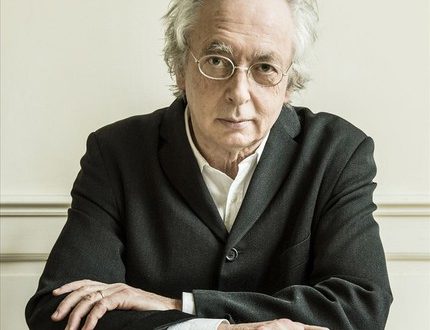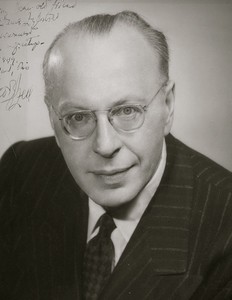
Eduard van Beinum |
Eduard van Beinum

By a happy coincidence, little Holland has given the world two wonderful masters over the course of two generations.
In the person of Eduard van Beinum, the best orchestra in the Netherlands – the famous Concertgebouw – received a worthy replacement for the famous Willem Mengelberg. When, in 1931, a graduate of the Amsterdam Conservatory, Beinum, became the second conductor of the Concertgebouw, his “track record” already included several years of leading orchestras in Hiedam, Haarlem, and before that, a long period of work as a violist in an orchestra, where he began playing from the age of sixteen , and pianist in chamber ensembles.
In Amsterdam, he first of all drew attention to himself by performing the modern repertoire: works by Berg, Webern, Roussel, Bartok, Stravinsky. This distinguished him from older and more experienced colleagues who worked with the orchestra – Mengelberg and Monte – and allowed him to take an independent position. Over the years, it has been strengthened, and already in 1938, the post of the “second” first conductor was established specifically for Beinum. After that, he already held much more concerts than the elderly V. Mengelberg. Meanwhile, his talent has gained recognition abroad. In 1936, Beinum conducted in Warsaw, where he first performed the Second Symphony by H. Badings dedicated to him, and after that he visited Switzerland, France, the USSR (1937) and other countries.
From 1945 Beinum became the sole director of the orchestra. Each year brought him and the team new impressive successes. Dutch musicians performed under his direction in almost all countries of Western Europe; the conductor himself, in addition to this, has successfully toured in Milan, Rome, Naples, Paris, Vienna, London, Rio de Janeiro and Buenos Aires, New York and Philadelphia. And everywhere criticism gave rave reviews of his art. However, numerous tours did not bring much satisfaction to the artist – he preferred careful, hard work with the orchestra, believing that only constant cooperation between the conductor and musicians could bring good results. Therefore, he turned down many lucrative offers if they did not involve lengthy rehearsal work. But from 1949 to 1952 he regularly spent several months in London, leading the Philharmonic Orchestra, and in 1956-1957 he worked in a similar way in Los Angeles. Beinum gave all his strength to his beloved art and died on duty – during a rehearsal with the Concertgebouw orchestra.
Eduard van Beinum played a huge role in the development of the national musical culture of his country, promoting the creativity of his compatriots, contributing to the development of orchestral art. At the same time, as a conductor, he was distinguished by a rare ability to interpret music from different eras and styles with the same skill and sense of style. Perhaps, French music was closest to him – Debussy and Ravel, as well as Bruckner and Bartok, whose works he performed with special inspiration and subtlety. Many works by K. Shimanovsky, D. Shostakovich, L. Janachek, B. Bartok, Z. Kodai were first performed in the Netherlands under his direction. Baynum had an amazing gift for inspiring musicians, explaining tasks to them almost without words; rich intuition, vivid imagination, lack of cliches gave his interpretation the character of a rare fusion of individual artistic freedom and the necessary unity of the entire orchestra.
Baynum left a considerable number of recordings, including works by Bach, Handel, Mozart, Beethoven, Brahms, Ravel, Rimsky-Korsakov (Scheherazade) and Tchaikovsky (suite from The Nutcracker).
L. Grigoriev, J. Platek





